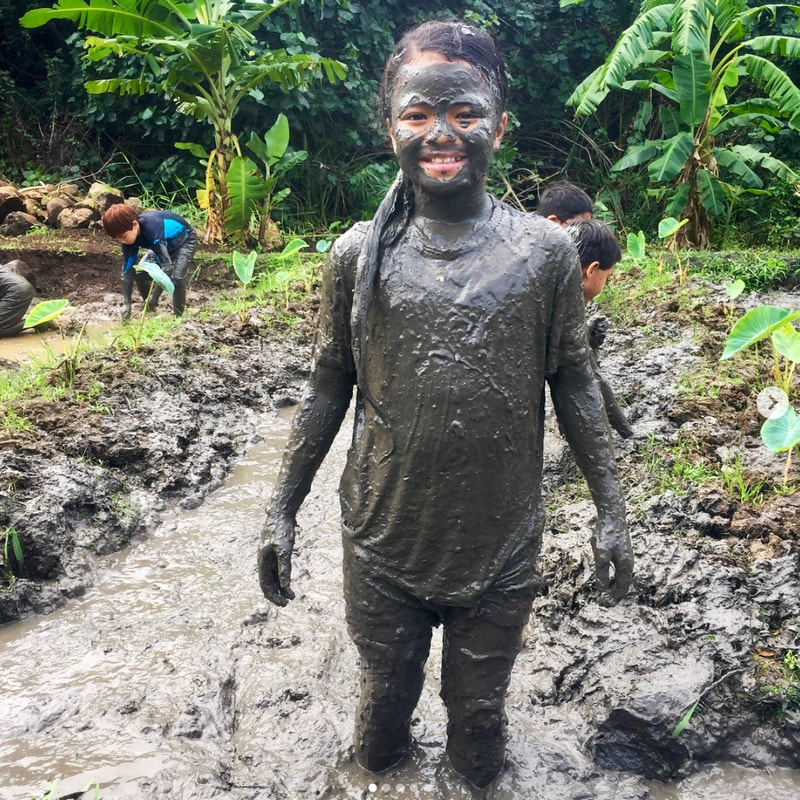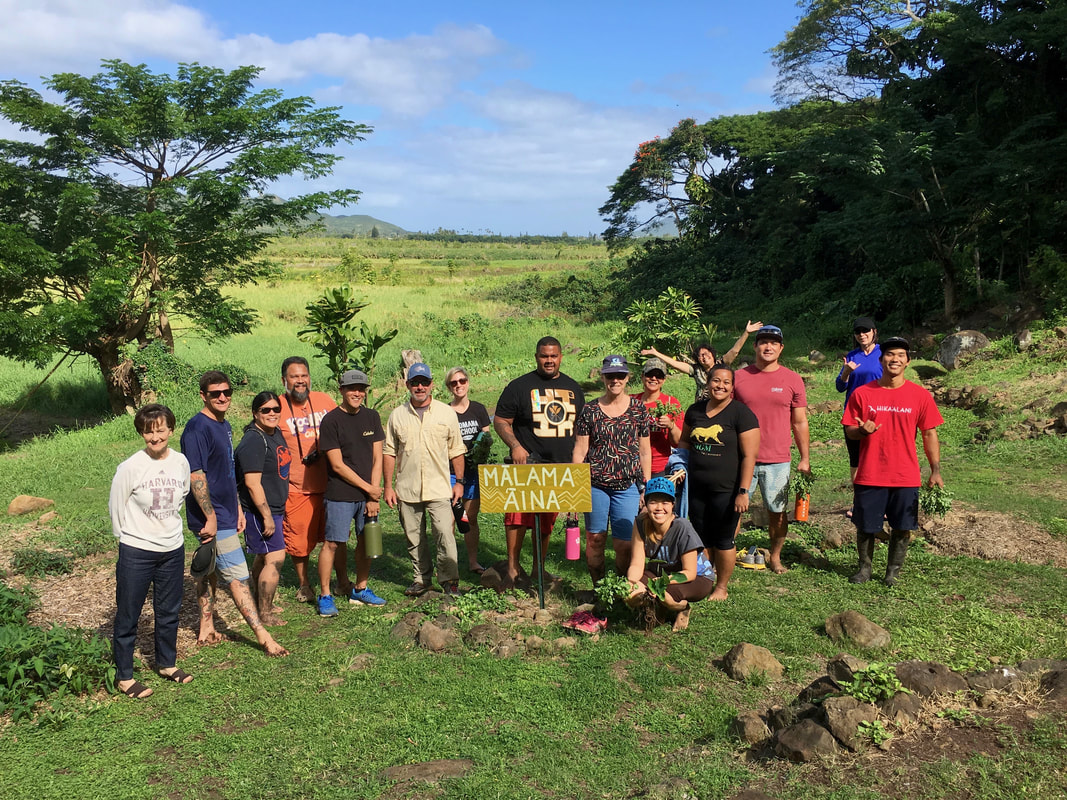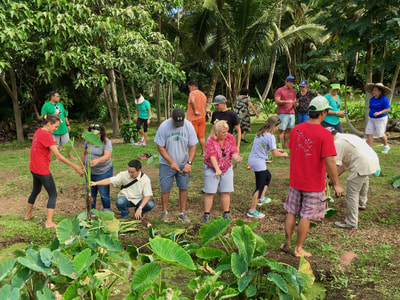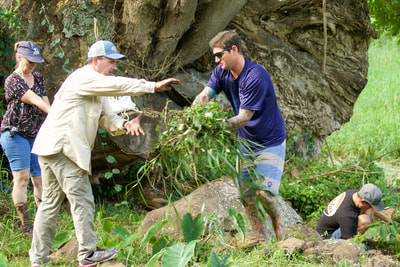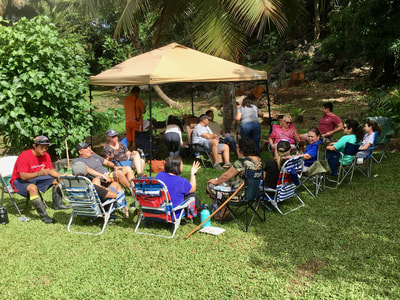|
After a stormy, labor-intensive weekend at the end of January, our first cohort of "stone eaters" went home with papa and pōhaku kuʻi 'ai -- and lots of elbow-grease homework. Kaleomanuʻiwa Wong, who leads the project and also doubles as photographer, took so many good pictures of that first work session that we decided to present it in two parts; this is the second. The stone-eater reference above, for those unfamiliar with "Kaulana nā Pua," the most famous of our mele ʻai pōhaku, reminds us that we would rather eat the stones of our land than lose it to hills of dollars. Pili Mai is helping to restore a relationship with ʻāina that demonstrates the kamaha'o nature of our pōhaku: they are wondrous, astonishing, and awe-inspiring in their ability to sustain us. (Mahalo to Duffy Chang and Keahi Thomas for their stone and board expertise. Photos: Kaleo Wong. Kīhōʻalu: David Kaʻio.) Manakō...Hoʻokō The pilot program "Pili Mai” is being run by Kaleo Wong under the auspices of Hikaʻalani. His intent is to reconnect Kailua people to an older, healthier Kailua by means of a complete round of family-centered Hāloa instruction: make the pounding board and the stone pounder; learn how to care for, harvest, clean, cook, and pound the taro grown at Ulupō; celebrate the entire process with a day of sharing at UIupō, a day that includes demonstrating and teaching to family members the process that will help put Ulupō poi back on their tables on a regular basis. Pictured here is half (the board half) of the papa and pōhaku workshop held on January 27-28 with the assistance of Duffy Chang and Keahi Thomas. As Kaleo explains: “The slabs of wood we will be using for our papa is mango (manakō) from a tree we cut down at Ulupō in September; the pōhaku will hopefully all come from Kailua as well so that every part of this program is Kailua based.” If our hopes are realized (hoʻokō ‘ia), Kaleo will be starting the next cohort in 2019. The Windward YMCA has been a very generous and active supporter of this project; in fact, its director Leigh Ann Landreth is one of the initial cohort. (Photos: Kaleomanuʻiwa. ʻOhe hano ihu: Kalepa Manu.) Julie George and her Kamehameha 3rd-graders "visited" us on the mornings of January 18th and 19th. In our lexicon, "visited" has a very specific meaning that has nothing to do with standing around in tour-group formations. It has everything to do with immersion, 'ike maka (experiencing for oneself), and ma ka hana ka ʻike (learning through doing). Mahalo e Kamehameha for finding us; Punahou, by the way, is still many "visits" ahead of you. I mua e nā pōki'i.
– KdS Our Hikaʻalani team (Kaleo, Maya, Ryan, Kaʻolu, and Kīhei) hosted teachers and administrators of the Department of Ed's Kailua-Kalāheo Complex at Ulupō yesterday as part of a DOE initiative (HĀ, Nā Hopena Aʻo) to establish six core values as foundational to all DOE instruction statewide. What this translates to, from the Hikaʻalani point of view, is aloha ʻāina education. So we ate ceremonial food, spoke humbly to the heiau, talked Hiʻiaka-Hauwahine-Mākālei-Hikaʻalani stories, and turned our hands down to mālama Hāloa. Because "pilialoha" was the watchword of the day, pilialoha was the kalo i kanu ʻia, and pilialoha with our community schools was what we hoped to further. Mahalo nui to KS for terrific coordinating-facilitating and to Hale Kealoha-Ai Pono, as always, for ʻai pono, ʻai kamahaʻo. – KdS
A hoʻohauʻoli look at some of the groups we've hosted and things we've accomplished in 2017. Mahalo to the Punahou 7th graders who showed up at Ulupō on December 20 and gifted us with their rendition of "Māpuna ka Hala o Kailua." It serves as the moena pāwehe on which we place our kiʻi and memories. –KdS |
Archives
December 2020
|

